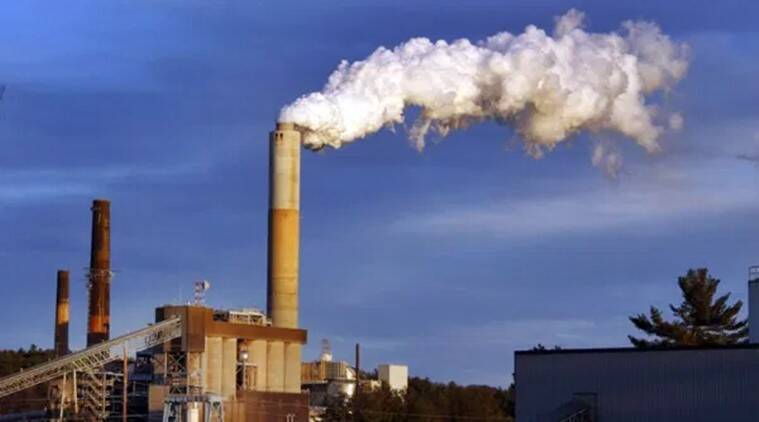 To address climate change effectively, we can’t focus exclusively on carbon; we need to integrate water management into our actions, and not just assume that any water uptake by trees will come back as rain. (File)
To address climate change effectively, we can’t focus exclusively on carbon; we need to integrate water management into our actions, and not just assume that any water uptake by trees will come back as rain. (File)Six years ago, world leaders adopted the “Paris Agreement,” a commitment to keep global warming below 2°C above pre-industrial levels, and preferably limit warming to 1.5°C. Momentum is building for the Conference of Parties (COP), where world leaders plan, deliberate upon, and engage to fulfil their commitments and plans. COP27 is set begin in Sharm El-Sheikh, Egypt on November 6, 2022.
Given our inability to reduce fossil fuel use fast enough to avert the climate crisis, much of the actual action has ended up being on “carbon offset schemes”, that allow individuals and companies to balance out their own carbon footprints by investing in environmental projects around the world, primarily through large-scale tree-planting. Trees sequester carbon by capturing carbon dioxide from the atmosphere and transform it into biomass through photosynthesis.
But one crucial factor is often missing from these conversations — the question of where the water to sustain all this tree-planting will come from.
In hot, dry climates that characterise much of India, not every region is suitable for high-density tree plantations. Low rainfall means that water is the factor that constrains what grows; it is why we have vast tracts of brown dusty landscapes. Native grasses and dryland plants are adapted to use little water in keeping with local rainfall patterns. In landscapes like the semi-arid savannahs in central India, indiscriminate tree planting may actually make things worse. Tree plantations in such areas can increase water uptake and reduce recharge, depleting the water table.
One common justification for large-scale tree planting is that trees eventually bring more rain. This is a possibility. Only a tiny fraction (less than 1 per cent) of the water taken up by trees is locked in biomass, the rest goes back into the atmosphere as transpiration and could get recycled and fall back as rain. But there are caveats. The change in vegetation has to be on a large scale (of the order of hundreds of sq km) to make any appreciable difference to local rainfall patterns and there is no guarantee that the rainfall will occur in the same location; it may occur downwind, the local watershed where trees are planted could still dry out as a recent global modelling study showed.
Most large-scale plantations occurring on private land in the Indian context are relatively small given the fragmented land holdings. But a bigger concern is that in drier regions, these plantations are being sustained by pumping from deep borewells. Project proponents argue that the saplings need to be irrigated only for the first three years, till the trees’ root system is developed. It’s unclear that high-density plantations will thrive without continued irrigation. In semi-arid regions where the water table is very deep, the roots of even deep-rooted trees are unlikely to reach groundwater. The high-density plantations then must rely only on rainfall to sustain their water needs. This may not be enough.
Many large-scale plantation efforts simply fail. Water is a major reason. Even if they do survive, we may end up with plantations with high tree morbidity that have very little to offer in terms of biodiversity. In other words, dry tinder-boxes, susceptible to fire. In other cases, low water-using native trees — like mango and pomegranate — are being planted on private lands with some provision for supplementary irrigation through a shared pipeline or tanker.
To address climate change effectively, we can’t focus exclusively on carbon; we need to integrate water management into our actions, and not just assume that any water uptake by trees will come back as rain. A warmer atmosphere can hold more water vapour (also a greenhouse gas), leading to further increases in temperature. As global warming intensifies, we can expect more average rainfall, which makes matters more complicated. How we harness and tap this additional water effectively to address climate change will be key.
Given that unscientific tree planting can lead to undesirable outcomes and wasteful expenditure, the discourse requires a course correction. The obsession with mass tree planting drives needs to be replaced with careful and responsible agroecological restoration practices. Permaculture (or permanent agriculture) models are good examples of this. Here, carbon sequestration by trees is not the main objective. These projects look at biomass more holistically to provide mulch, fodder, food and live fencing. The projects are designed considering water availability and track both above-ground and soil carbon, thereby contributing to the sustenance of the entire ecosystem. Multi-layer farming and agroforestry are other models that provide opportunities for trees to be planted for the right reasons and at the right density.
Going forward, there is a need to define archetypes and standards for degradation so that appropriate restoration interventions can be designed. We urgently need standardised indicators that facilitate effective decision-making on conservation, restoration and sustainable use. The indicators must consider the local environmental conditions such as rainfall, soil, and biodiversity; global and local drivers of change, and their social and ecological impacts; as well as broad management and restoration objectives and the cost-effectiveness and impact of such strategies. With good planning of tree-planting projects, there’s potential to avoid losing too much water in dry regions or even increase the water availability in such regions. Understanding the relationship between afforestation and the water cycle will build a strong foundation for such planning.
Malhotra is a policy analyst at the Centre for Policy Design at ATREE, Bengaluru. Srinivasan is the director of the Centre for Social and Environmental Innovation at ATREE